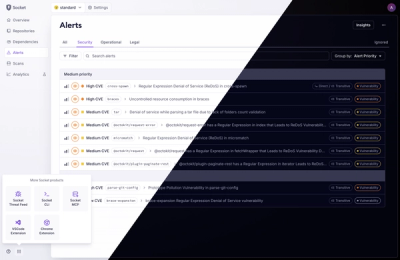goquery - a little like that j-thing, only in Go

GoQuery brings a syntax and a set of features similar to jQuery to the Go language. It is based on Go's net/html package and the CSS Selector library cascadia. Since the net/html parser returns tokens (nodes), and not a full-featured DOM object, jQuery's manipulation and modification functions have been left off (no point in modifying data in the parsed tree of the HTML, it has no effect).
Also, because the net/html parser requires UTF-8 encoding, so does goquery: it is the caller's responsibility to ensure that the source document provides UTF-8 encoded HTML.
Supported functions are query-oriented features (hasClass(), attr() and the likes), as well as traversing functions that make sense given what we have to work with. This makes GoQuery a great library for scraping web pages.
Syntax-wise, it is as close as possible to jQuery, with the same function names when possible, and that warm and fuzzy chainable interface. jQuery being the ultra-popular library that it is, I felt that writing a similar HTML-manipulating library was better to follow its API than to start anew (in the same spirit as Go's fmt package), even though some of its methods are less than intuitive (looking at you, index()...).
Installation
Please note that because of the net/html dependency, goquery requires Go1.1+.
$ go get github.com/PuerkitoBio/goquery
(optional) To run unit tests:
$ cd $GOPATH/src/github.com/PuerkitoBio/goquery
$ go test
(optional) To run benchmarks (warning: it runs for a few minutes):
$ cd $GOPATH/src/github.com/PuerkitoBio/goquery
$ go test -bench=".*"
Changelog
Note that goquery's API is now stable, and will not break.
- v0.3.2 : Add
NewDocumentFromReader() (thanks jweir) which allows creating a goquery document from an io.Reader.
- v0.3.1 : Add
NewDocumentFromResponse() (thanks assassingj) which allows creating a goquery document from an http response.
- v0.3.0 : Add
EachWithBreak() which allows to break out of an Each() loop by returning false. This function was added instead of changing the existing Each() to avoid breaking compatibility.
- v0.2.1 : Make go-getable, now that go.net/html is Go1.0-compatible (thanks to @matrixik for pointing this out).
- v0.2.0 : Add support for negative indices in Slice(). BREAKING CHANGE
Document.Root is removed, Document is now a Selection itself (a selection of one, the root element, just like Document.Root was before). Add jQuery's Closest() method.
- v0.1.1 : Add benchmarks to use as baseline for refactorings, refactor Next...() and Prev...() methods to use the new html package's linked list features (Next/PrevSibling, FirstChild). Good performance boost (40+% in some cases).
- v0.1.0 : Initial release.
API
GoQuery exposes two classes, Document and Selection. Unlike jQuery, which is loaded as part of a DOM document, and thus acts on its containing document, GoQuery doesn't know which HTML document to act upon. So it needs to be told, and that's what the Document class is for. It holds the root document node as the initial Selection object to manipulate.
jQuery often has many variants for the same function (no argument, a selector string argument, a jQuery object argument, a DOM element argument, ...). Instead of exposing the same features in GoQuery as a single method with variadic empty interface arguments, I use statically-typed signatures following this naming convention:
- When the jQuery equivalent can be called with no argument, it has the same name as jQuery for the no argument signature (e.g.:
Prev()), and the version with a selector string argument is called XxxFiltered() (e.g.: PrevFiltered())
- When the jQuery equivalent requires one argument, the same name as jQuery is used for the selector string version (e.g.:
Is())
- The signatures accepting a jQuery object as argument are defined in GoQuery as
XxxSelection() and take a *Selection object as argument (e.g.: FilterSelection())
- The signatures accepting a DOM element as argument in jQuery are defined in GoQuery as
XxxNodes() and take a variadic argument of type *html.Node (e.g.: FilterNodes())
- Finally, the signatures accepting a function as argument in jQuery are defined in GoQuery as
XxxFunction() and take a function as argument (e.g.: FilterFunction())
GoQuery's complete godoc reference documentation can be found here.
Please note that Cascadia's selectors do NOT necessarily match all supported selectors of jQuery (Sizzle). See the cascadia project for details.
Examples
Taken (and adapted as if executed from outside the goquery package) from example_test.go:
package main
import (
"fmt"
"log"
"github.com/PuerkitoBio/goquery"
)
func ExampleScrape() {
doc, err := goquery.NewDocument("http://metalsucks.net")
if err != nil {
log.Fatal(err)
}
doc.Find(".reviews-wrap article .review-rhs").Each(func(i int, s *goquery.Selection) {
band := s.Find("h3").Text()
title := s.Find("i").Text()
fmt.Printf("Review %d: %s - %s\n", i, band, title)
})
}
func main() {
ExampleScrape()
}
License
The BSD 3-Clause license, the same as the Go language. Cascadia's license is here.




